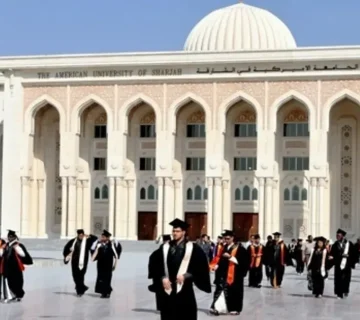International Rankings of Arab Universities 2024-2025
The international rankings of Arab universities for the years 2024 and 2025 have highlighted significant progress and achievements by institutions across the Arab world. These rankings, issued by reputable organizations such as QS (Quacquarelli Symonds) and Times Higher Education (THE), provide a comprehensive analysis of the performance of universities based on various metrics, including academic reputation, research output, international collaboration, and graduate employability. This report delves into the details of these rankings, presenting key findings, trends, and insights.
Overview of University Rankings
University rankings serve as a critical benchmark for evaluating the quality of higher education institutions globally. They influence the perceptions of students, parents, employers, and policymakers regarding the academic and research standards of universities. The rankings for Arab universities in 2024-2025 demonstrate the region’s growing prominence in the global higher education landscape.
QS World University Rankings 2025
The QS World University Rankings are among the most recognized global university rankings. For the 2025 edition, QS evaluated universities based on several criteria, including academic reputation, employer reputation, faculty-student ratio, research citations, and internationalization metrics. The QS Arab Region Rankings, a subset of the global rankings, focuses specifically on universities in the Arab world.
Key Highlights from QS Rankings 2025:
- Participation and Scope: The QS Arab Region Rankings 2025 included 246 universities from 20 Arab countries, marking an increase from 223 universities in 2024 (Alamarabi, 2024).
- Top Performers:
- King Fahd University of Petroleum and Minerals (Saudi Arabia) retained its position as the top-ranked university in the Arab world (PR Newswire, 2024).
- Qatar University advanced to the second position, overtaking King Saud University (Saudi Arabia), which ranked third.
- Khalifa University (UAE) and United Arab Emirates University (UAE) secured the fourth and fifth positions, respectively.
- Country Representation:
- Egypt had the highest number of universities in the rankings, with 36 institutions, followed by Saudi Arabia (34 universities) and Iraq (32 universities) (Alamarabi, 2024).
- Saudi Arabia and the UAE dominated the top 50 rankings, accounting for 44% of the institutions in this category.
Methodology:
The QS Arab Region Rankings use a modified methodology tailored to the region’s priorities. It includes ten indicators, six of which are derived from the global QS rankings but with adjusted weights. Four additional indicators specific to the Arab region are also included, such as web impact and international collaboration (Alamarabi, 2024).
Times Higher Education (THE) Arab University Rankings 2024
The Times Higher Education (THE) Arab University Rankings provide another perspective on the performance of universities in the region. The 2024 edition of THE rankings included 238 universities from 16 Arab countries, with 112 additional institutions listed as “reporters” for providing data but not meeting the eligibility criteria (Times Higher Education, 2024).
Key Highlights from THE Rankings 2024:
- Top Performers:
- King Abdullah University of Science and Technology (KAUST, Saudi Arabia) ranked first, followed by King Fahd University of Petroleum and Minerals (Saudi Arabia) and King Saud University (Saudi Arabia) (Times Higher Education, 2024).
- Qatar University and King Abdulaziz University (Saudi Arabia) rounded out the top five.
- Country Representation:
- Saudi Arabia had the most universities in the top 10, with five institutions.
- Other countries represented in the top 10 included Qatar, the UAE, Egypt, and Jordan.
- Global Impact:
- A total of 51 Arab universities were ranked among the top 1,000 universities globally, an increase from 45 in 2024 (Alamarabi, 2024).
Methodology:
THE rankings evaluate universities based on five key pillars: teaching, research, citations, international outlook, and industry income. These metrics provide a holistic view of university performance, emphasizing both academic and societal contributions (Times Higher Education, 2024).
Arab Universities in Global Rankings
Arab universities have also made significant strides in global rankings. According to the QS World University Rankings 2025, 15 Arab universities were listed among the top 500 universities worldwide (CNN Business Arabic, 2024).
Notable Achievements:
- Top Arab Universities Globally:
- King Fahd University of Petroleum and Minerals ranked 101st globally.
- Qatar University and King Abdulaziz University ranked 122nd and 149th, respectively.
- Regional Representation:
- Saudi Arabia led the region with six universities in the top 500, followed by the UAE and Qatar.
Trends and Insights
- Regional Dominance:
- Saudi Arabia continues to dominate Arab university rankings, with multiple institutions consistently ranking among the top globally and regionally. This reflects the country’s significant investment in higher education and research infrastructure.
- The UAE and Qatar have also emerged as strong contenders, showcasing their commitment to academic excellence and innovation.
- Increasing Participation:
- The number of Arab universities participating in international rankings has steadily increased over the years. For instance, the QS Arab Region Rankings grew from 122 universities in 2019 to 246 in 2025 (Alamarabi, 2024).
- Focus on Research and Collaboration:
- Arab universities are placing greater emphasis on research output and international collaboration, as evidenced by their improved performance in metrics such as citations and global partnerships.
- Challenges:
- Despite these achievements, challenges remain, including disparities in performance among countries, limited funding for research in some regions, and the need for greater alignment with global academic standards.
Conclusion
The international rankings of Arab universities for 2024-2025 highlight the region’s progress in higher education. With institutions like King Fahd University of Petroleum and Minerals, Qatar University, and King Abdullah University of Science and Technology leading the way, Arab universities are gaining recognition for their academic and research excellence. However, continued investment in education, research, and international collaboration will be crucial to sustaining this momentum and addressing existing challenges.
References
- Alamarabi. (2024, October). تصنيف كيو إس للجامعات العربية 2025 | أفضل الجامعات في العالم العربي – عالم عربي. Retrieved from https://alamarabi.com/2024/10/تصنيف-كيو-إس-للجامعات-العربية-2025/
- PR Newswire. (2024, October 18). تصنيف كيو إس العالمي للجامعات: المنطقة العربية لعام 2025. Retrieved from https://www.prnewswire.com/ae/ar/news-releases/u062Tu0635u0646u064Au002Du0643u064Au0648u002Du0625u0633u002Du0627u0644u0639u0627u0644u0645u064Au002Du0644u0644u062Cu0627u0645u0639u0627-302280545.html
- Times Higher Education. (2024). Arab University Rankings 2024. Retrieved from https://www.timeshighereducation.com/world-university-rankings/2024/arab-university-rankings
- CNN Business Arabic. (2024, June 9). 15 جامعة عربية ضمن الـ500 الأفضل عالمياً في 2025. Retrieved from https://cnnbusinessarabic.com/economy/66260/15-جامعة-عربية-ضمن-الـ500-الأفضل-عالمياً-في-2025








No comment